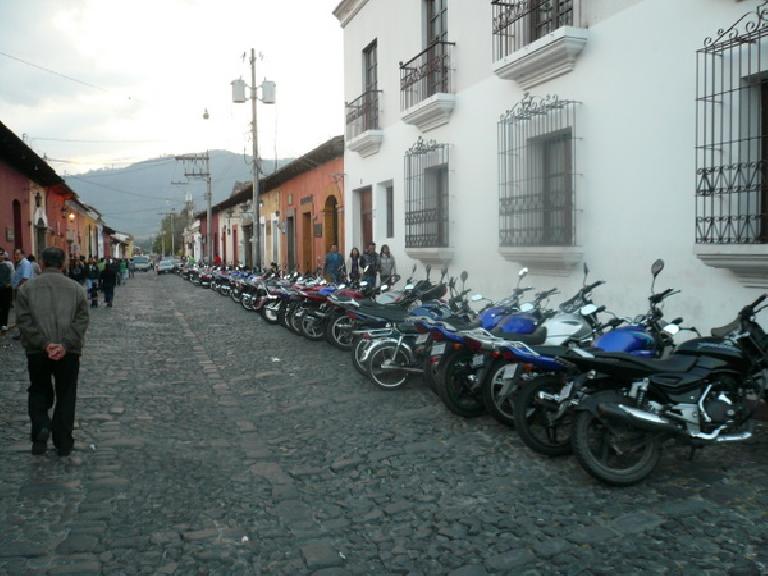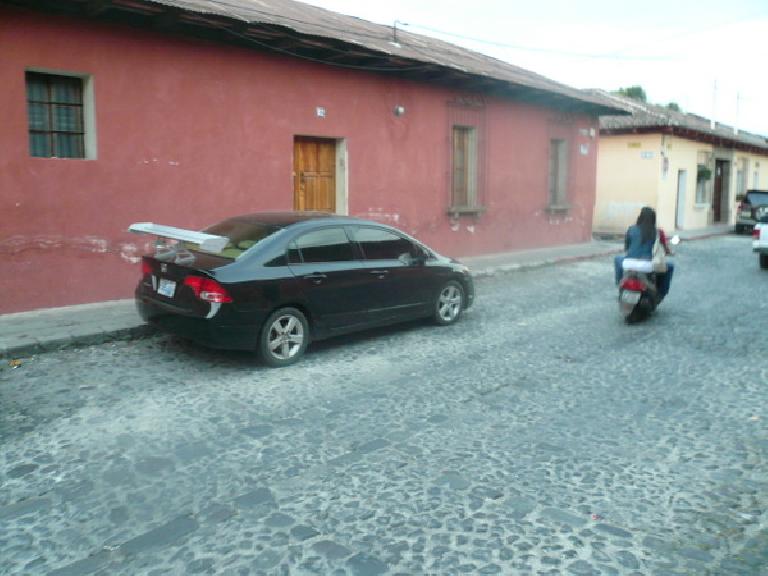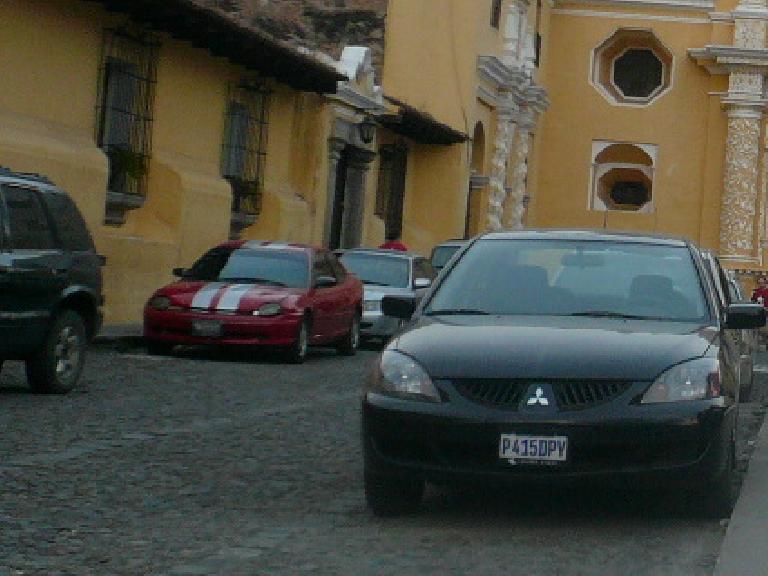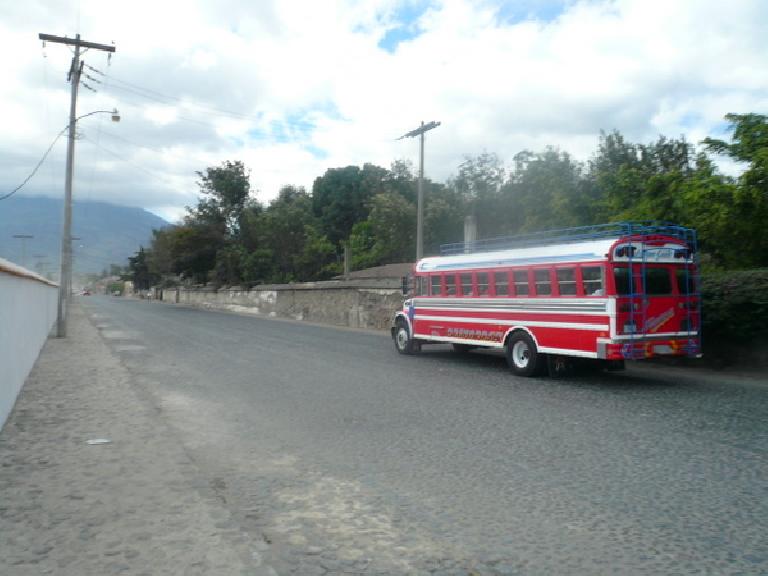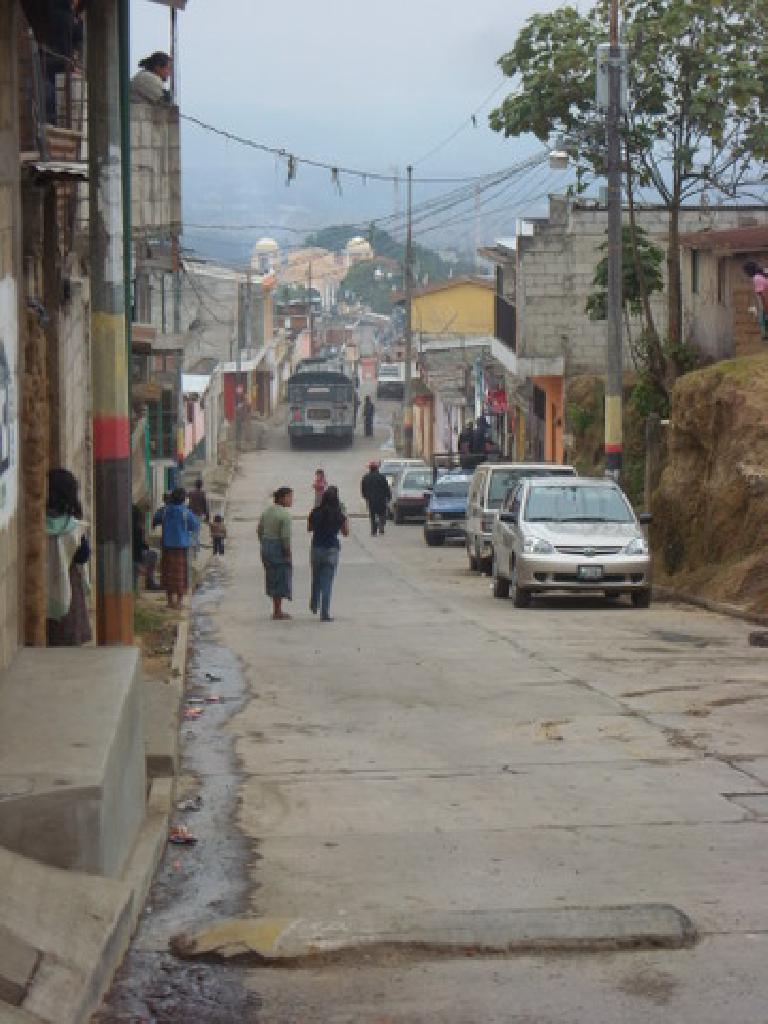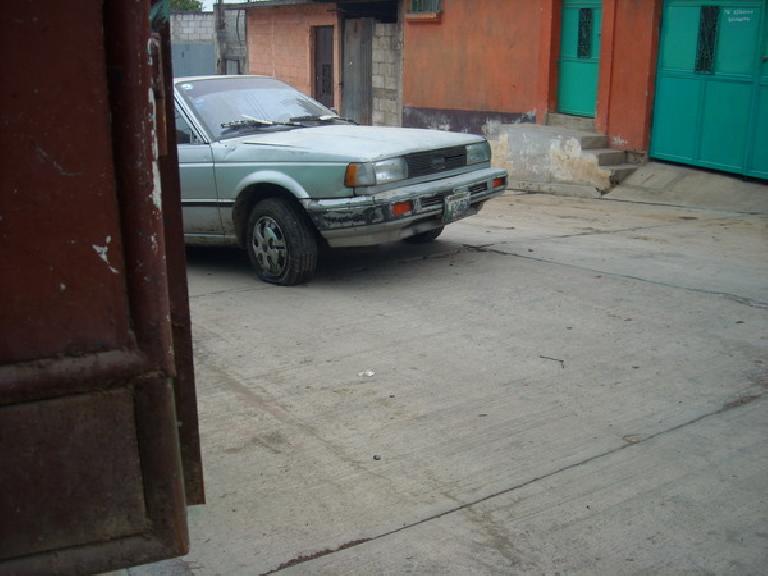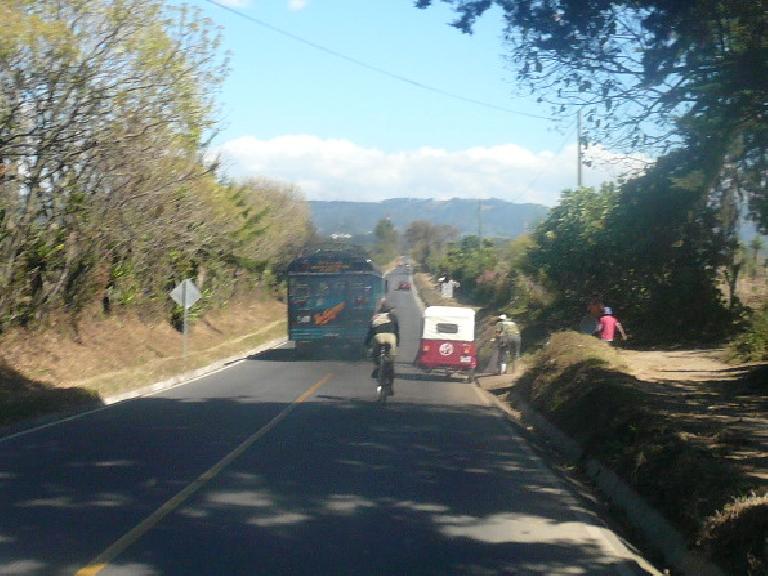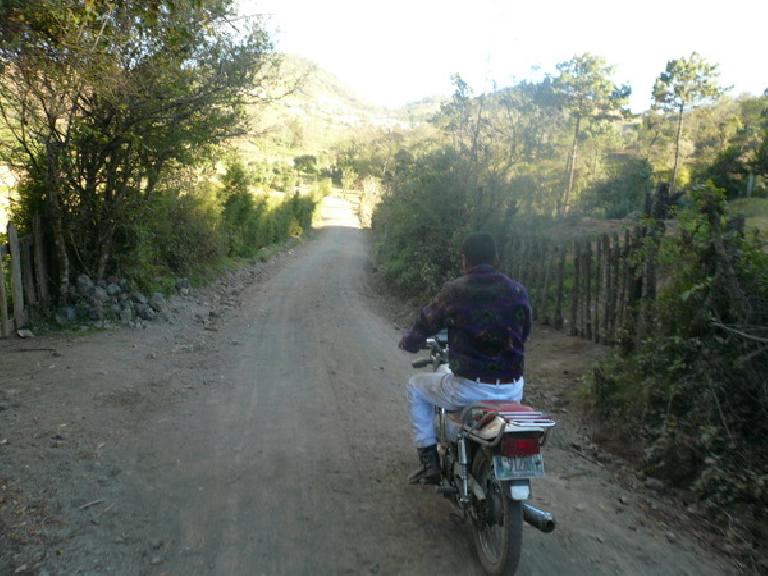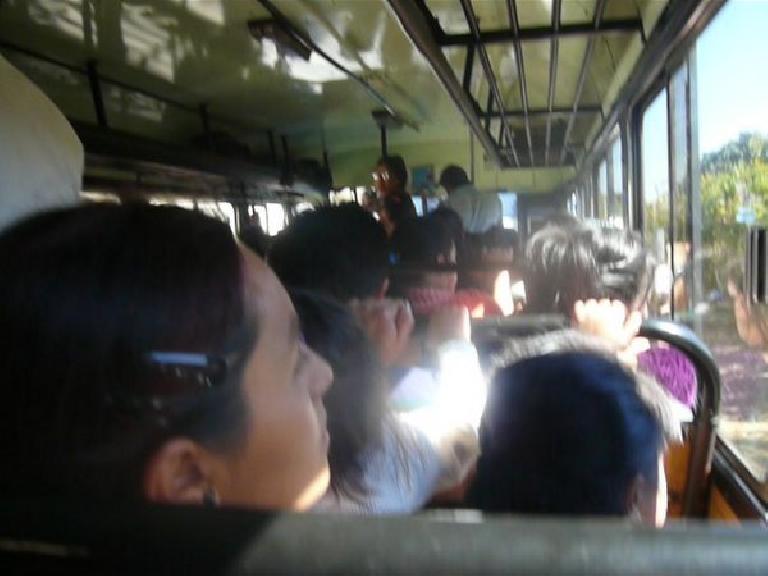Vehicles in Guatemala
Only 19 per 1000 people in Guatemala own a car, so Guatemalans rely on other forms of transport more than U.S. citizens (for which there are 843 cars per 1000 people). This includes the following:
- Private shuttles: These include mini-vans or coach buses, and are reputedly targets by criminals due to obvious (relative) wealth inside.
- Chicken buses: Recycled (refurbished) U.S. school buses from the 70s and 80s that are considered the safest way to travel—except for in Guatemala City, where they are subject to extortion schemes through drug gang territories. Subject to petty theft too, especially if you were to stash items on the roof or overhead racks. About 300 chicken bus drivers and passengers were killed in Guatemala in 2010. The buses are extremely popular, however, and it is not unusual for people to have to sit three abreast on a two-person seat with many more people standing in the aisles.
- Tuk-tuks: These noisy, three- and four-wheeled vehicles about the size of the original Mini Cooper are powered by motorcycle engines. They emit a lot of smoke and are not very fast. They are inexpensive, however. For example, the first time I went to Maya Pedal, I took one and it cost three Quetzales (USD$0.38). If I knew where Maya Pedal was, it would have otherwise been a 10-minute uphill walk.
- Taxis: From the Guatemala City airport to Antigua (about 45 minutes), usually about $35, but negotiable down to, say, $20. Usually are beat-up Japanese sedans from the 80s and 90s. I expect their prices are much lower in other parts of Guatemala.
- Motorcycles: Predictably a popular means of transport as well, due to their low costs and high fuel efficiency relative to cars. But the motorcycles are not race-replica sport bikes or hulking cruisers. Instead, they mostly are lower-displacement standards that are a step up from scooters in terms of power.
- Bicycles: Most bicycles in Guatemala seemed to be dilapidated department store bikes like Huffys and Murrays from the 80s. Most of the bikes customers brought in to Maya Pedal had multiple things wrong with them. I actually saw a lot more people riding bikes in my hometown of Fort Collins, Colorado than anywhere in Guatemala, partly because bicycles are beyond the reach of many Guatemalans, but also because the country lacks the infrastructure for safe cycling (e.g., bad roads with no shoulders).
Of the cars that are on the roads, most of them are Japanese compact sedans from the 1980s and 1990s that are often beyond the state of disrepair. I’ve never seen so many cars with flat tires before. Some of the cars are also compact Peugeots and Chevys that are not available in the States.
Some luxury cars do exist, particularly in Antigua where you’d see a BMW or Audi now and then. I also saw a few sports cars, including an Audi TT Coupe, Mazda Miata and BMW Z3 (all first-generation ones). Surprisingly, no Mustangs.
Despite the low car-ownership rate in Guatemala, air pollution is some of the worst I’ve ever seen (probably even worse than some of the big cities in China). The problem is most cars, trucks and buses—especially those outside of Antigua and Guatemala City—are so old and on their last legs that they are belching out smoke. And these gross polluters spew out thousands more pollutants than a newer car with functioning smog control equipment.

